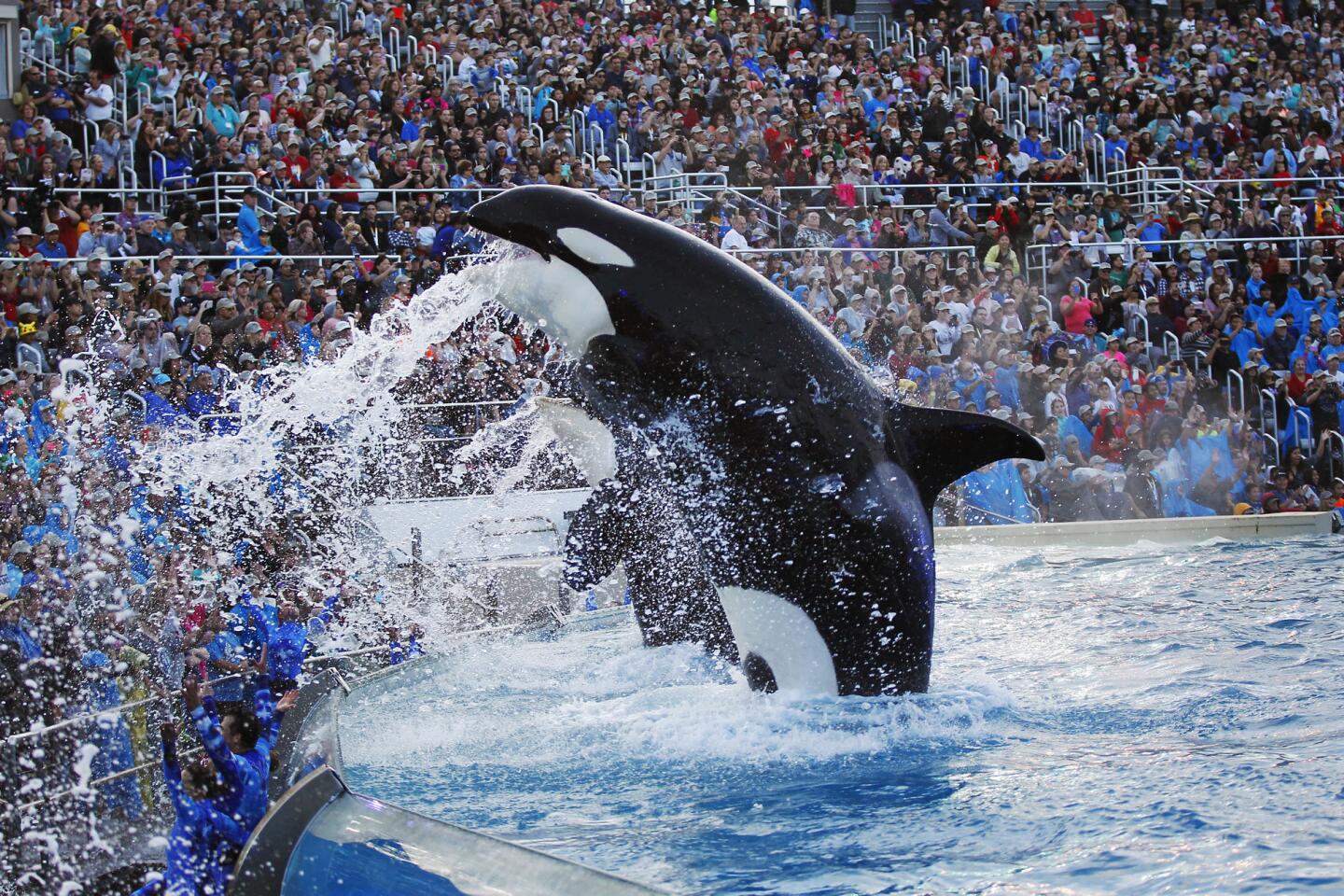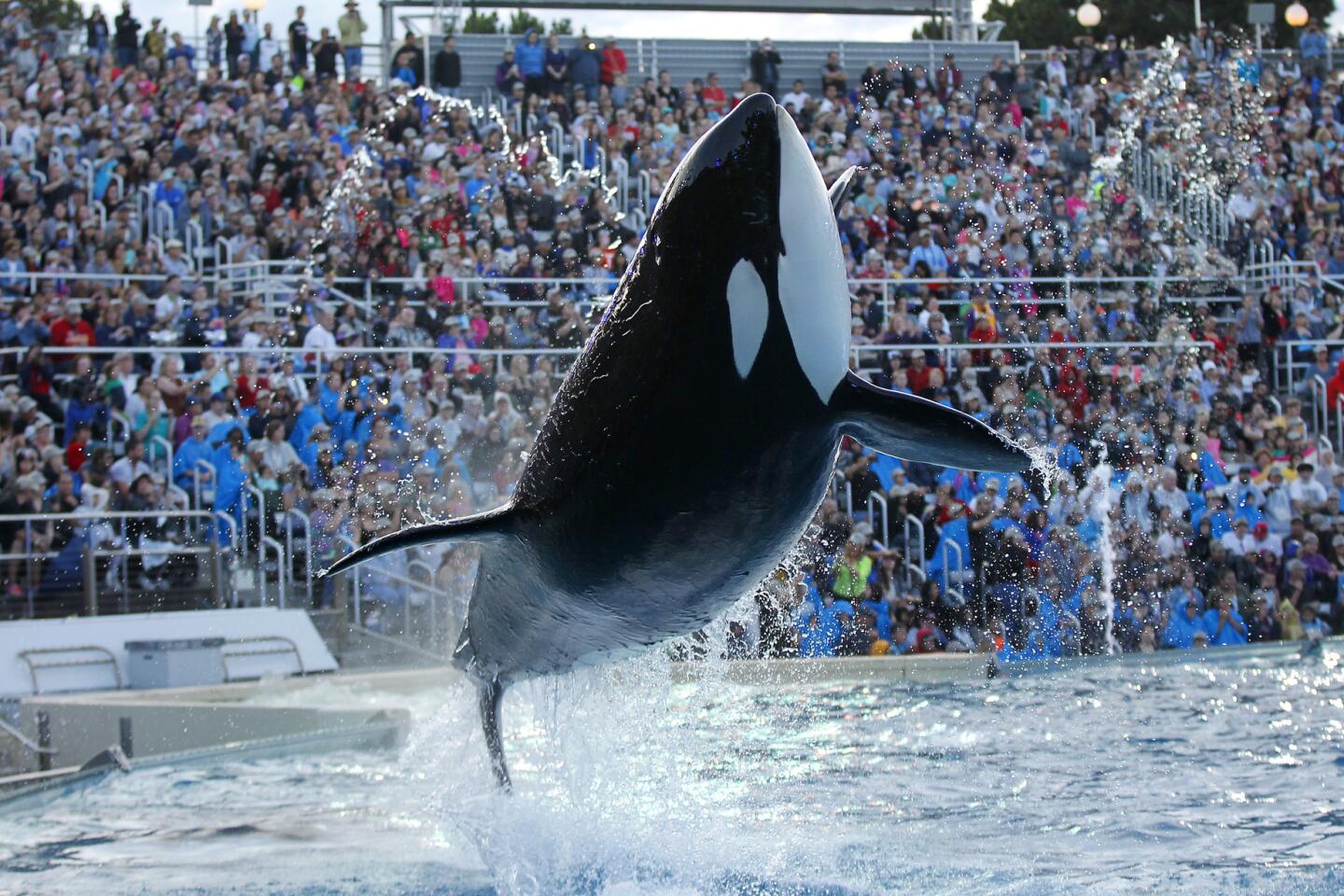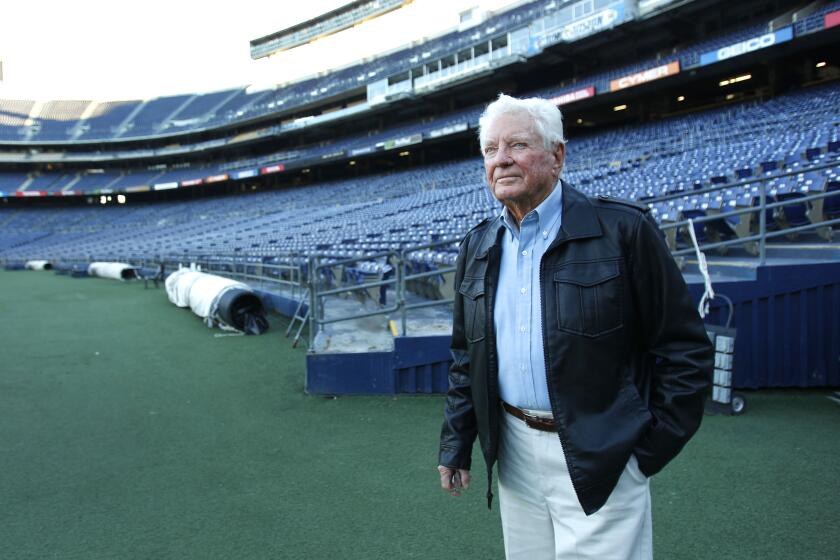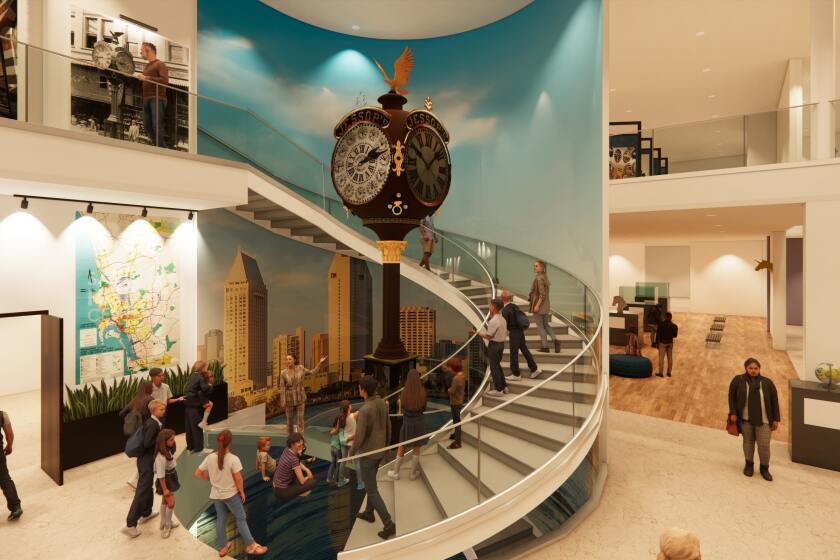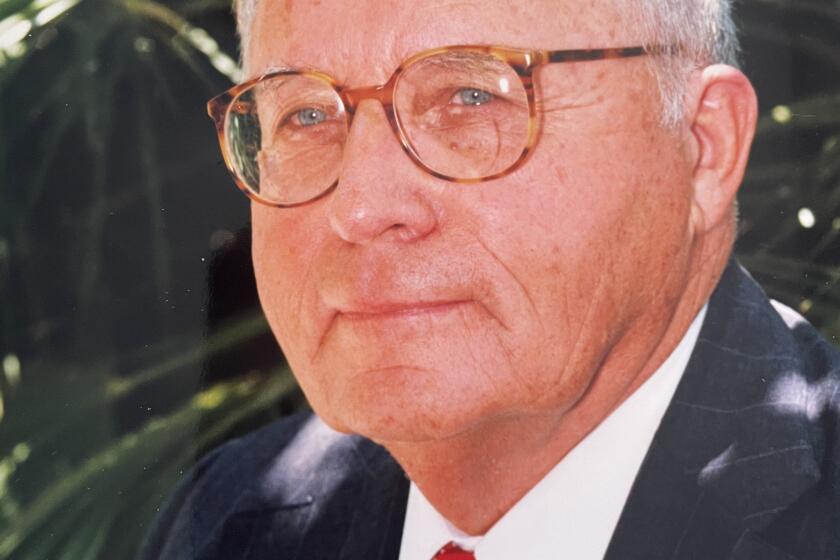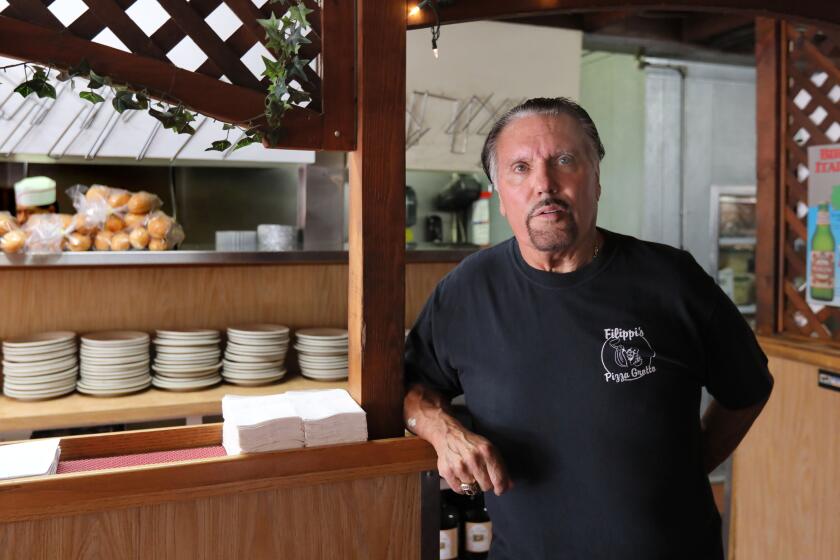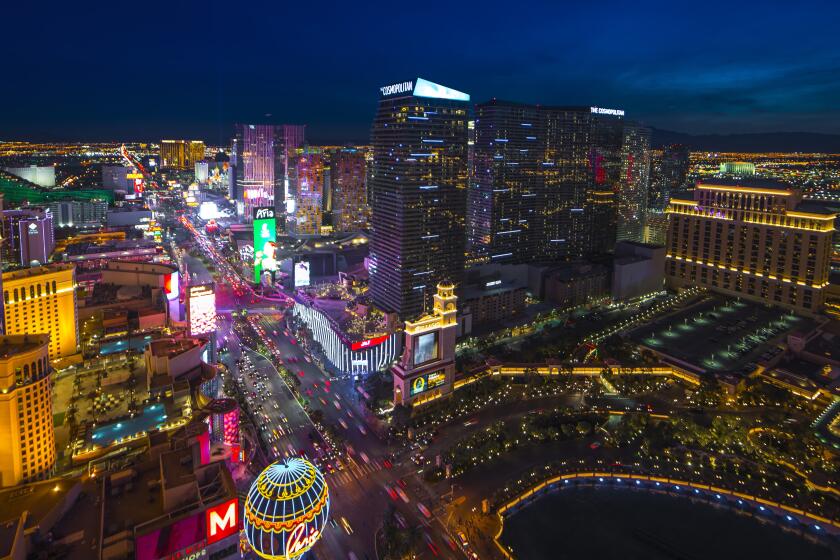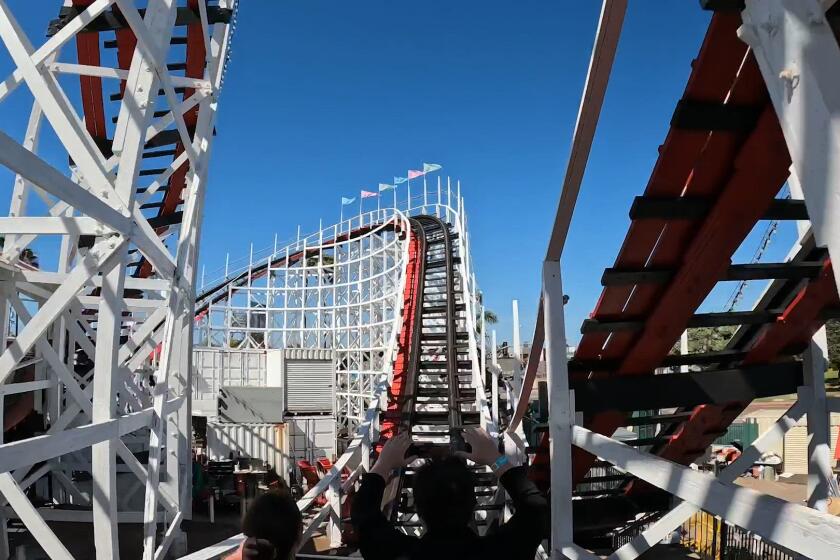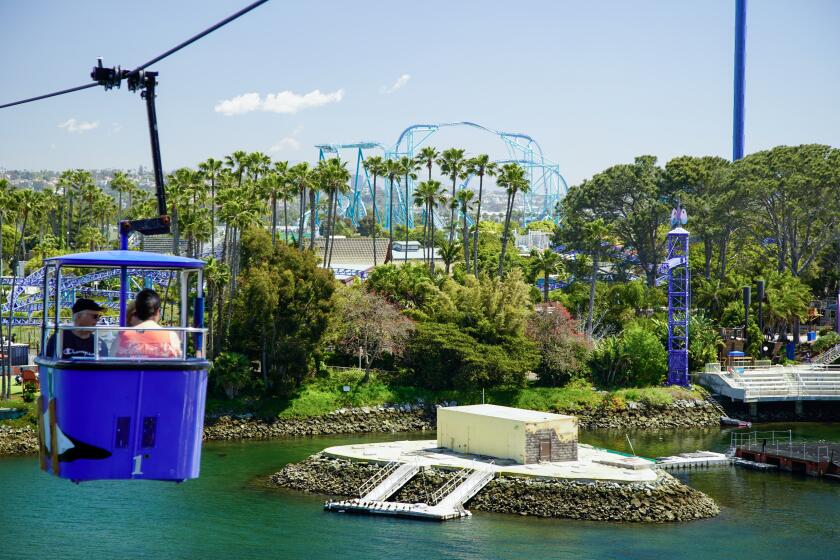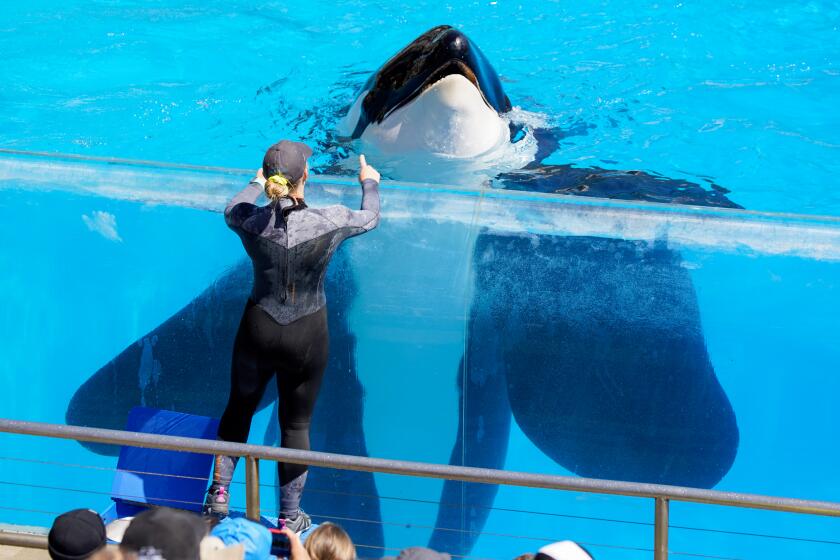SeaWorld’s Shamu show delivers last splash
Fifty years of splashes, twirls and and leaps into the air came to an end Sunday as SeaWorld’s 11 killer whales took their final entertainment-laden bow.
When the black-and-white behemoths return with “Orca Encounter” this summer, park planners promise a more naturalistic storyline and performance.
But at Shamu Stadium, with its 3.2-million-gallon tank, the third and final “One Ocean” show pulled out all the stops. Retired trainers were on hand and souvenirs were handed out to the standing-room-only crowd, some of whom expressed nostalgia and sadness.
“I remember it being magical,” said La Jolla resident Mary King, 41, of her first visit more than 35 years ago when trainers still rode the backs of the whales.
Her husband, John, 42, said he gained appreciation for sea life when he saw the show over the years, enhanced by the showbiz aspects of orca shows that began in 1966. He and others expressed regret that SeaWorld is removing the show’s human-like antics in the face of opposition from animal-rights advocates.
“I resent the people who did that film,” he said, referring to the 2013 “Blackfish” documentary about the SeaWorld Orlando death of trainer Dawn Brancheau and Tilikum, the orca that killed her and died Friday.
But the politics escaped the notice of the youngsters on hand for one last time.
“It’s really cool how they jump out of the water,” said the Kings’ daughter, Angie, 10.
Eric Crow, 10, of Clairemont said the last show seemed extra energetic and sent him home with a goal.
“It inspired me to think about working here,” he said.
Said Carmel Valley resident Sarah McMurtry, 16, “I want to be a trainer.” She said she goes to SeaWorld several times a week after school and on the weekends and is developing her public-speaking skills to prepare for a potential park career.
Lindy Donahue, 37, was one of about 20 present and former trainers who participated in the 23-minute show that was repeated three times during the day. She said she fondly remembered riding the backs of the whales after she joined SeaWorld 16 years ago.
“I’m really excited for the natural look we’re going to have,” she said.
SeaWorld San Diego President Marilyn Hannes welcomed the 5,500-plus guests at the final show with video previews of attractions to come this year and next and assured the crowd that the orcas aren’t going anywhere.
“We will continue to share these amazing sea animals for decades to come,” she said.
The oldest killer whale, Corky, is about 52 while the youngest, Amaya, just turned 2 last month.
She said smart phone users can text Orca to 397771 to learn more.
Until the new show debuts, guests can enjoy an interim show starting today, “Killer Whale Presentation,” at the underwater viewing area pool where 1,100 bleacher seats have been set up for educational sessions several times a day.
The final show began as always with a three-minute video introduction prior to the whales’ entrance.
They huddled at the feet of the trainers, paraded past the grandstand, rose and twirled above the surface and leaped completely out of the water to the cheers of the crowd.
The announcer then said, “Let’s do it one last time, Shamu Stadium, are you ready to get wet?”
And wet those seated in the “Soak Zone” got.
Seated in the front row were Carmen Montano and her three grandchildren, all from Chula Vista, who had already attended the 2 p.m. show.
“I like it when we get wet,” said Victoria Chavez, 8.
“I like the jumps,” said her cousin Aaron Montano, 4.
His brother Abel chimed in, “I like it when they do the back flips.”
On the way out the stadium, Mary Jo Lindstrom, 72, of Ocean Beach called the show “beautiful” and “inspiring.”
“It makes me a little sad it’s over,” she said.
Added her husband, Ben, 75, “It was one of those lifetime moments.”
The killer whale show began with a young, 14-foot, 1,800-pound female captured off the coast of Seattle Nov. 1, 1965, by Ted Griffin and Don Goldsberry for Griffin’s privately run Seattle Public Aquarium.
At first she was kept in a pen with a male called Namu, captured earlier. Her keepers called her Shamu, a name that may have been concocted by combining “she” and “Namu,” park officials said.
SeaWorld founder George Millay agreed to pay $25,000 for Shamu and an additional $10,000 if she lived for a year.
Chief trainer Dave Kenney inspected her in Seattle and she was flown to San Diego in what was described as a “big coffin full of water with filters and nets and a hammock-like stretcher.”
Then-Mayor Frank Curran declared “Shamu Day” for Dec. 20, 1965, when she arrived.
On Jan. 5, 1966, the Evening Tribune reported that after eight days of training, Shamu had learned to jump seven feet and touch the end of a pole.
“One of the next things we want to teach her is to come to the surface and hold her mouth open so I can brush her teeth,” said training director Kent Burgess.
The public was welcomed to the watch training that went on for three to four hours a day.
“There’s a killer in town!” said a SeaWorld ad. “See her leap completely out of the water, roll over on her back — even kiss her trainer on the check.”
A dolphin named George was kept in the tank to keep her company and the two teased and chased one another.
“George likes to nip Shamu’s tail and then swim rapidly away,” Burgess recounted.
Later in 1966, Shamu starred in “Doctor Do Little,” the first of 19 shows that displayed the whales’ acrobatic feats and interaction with trainers — including with a few people-orca incidents and injuries incurred over the years.
In June 1971, “Shamu Goes Hollywood” debuted with actress Debbie Reynolds chairing a star-studded fund-raising preview at the park that benefited the Motion Picture and Country Home and Hospital in Woodland Hills. The park donated $10,000 and Millay kicked in another thousand.
“Even Shamu seemed to enjoy the added publicity,” The San Diego Union reported. “She leaped, spun, drove and splashed to the delight of notables and not-so-notables.”
Shamu herself had already retired in April 1971 and died the following August.
Since then, SeaWorld has given individual names to subsequent orcas that have been born in San Diego or brought from elsewhere.

roger.showley@sduniontribune.com; (619) 293-1286; Twitter: @rogershowley
Get U-T Business in your inbox on Mondays
Get ready for your week with the week’s top business stories from San Diego and California, in your inbox Monday mornings.
You may occasionally receive promotional content from the San Diego Union-Tribune.
